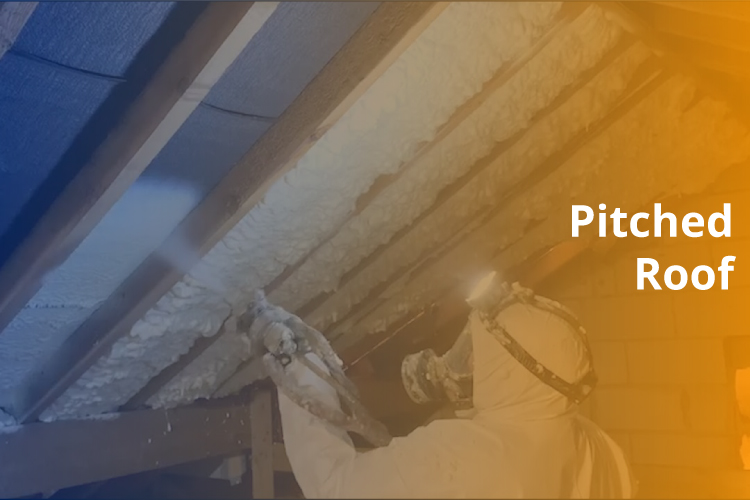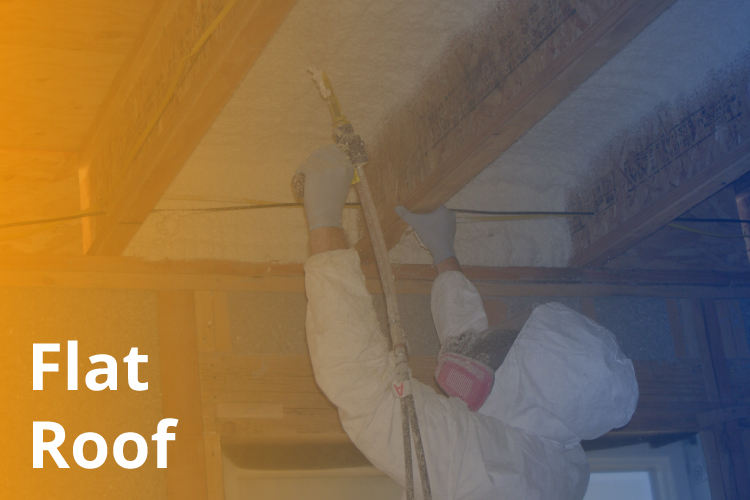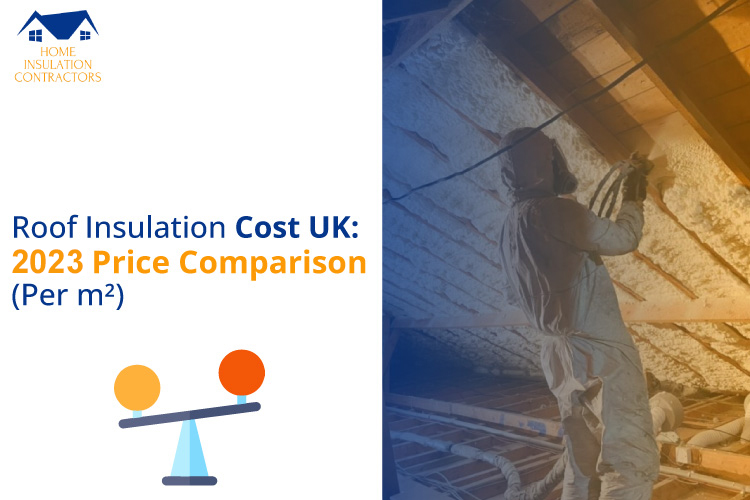Roof insulation cost per square metre in the UK typically ranges from £20 to £50. But how much it costs for you?
The relevance of roof insulation cannot be overstated if you want to keep the heat inside your house warm while reducing your energy costs. However, the cost of roof insulation in the UK might vary and our contractors can assist you in addressing this query.
The surface area of your property, the materials you select, and of course your budget will all have an influence on the final cost of roof insulation. In this article, we can give you a better understanding of roof insulation.
The total cost of roof insulation is around £570 on average in the UK. Large homes will have higher roof insulation costs because there are more materials and labour costs involved.
If you haven’t yet realised how pivotal roof insulation might be to reducing your energy costs, you might want to consider asking whether or not it is worthwhile to have roof insulation installed in the UK.
The best roof insulation materials to utilise include polystyrene roof panels, glass wool, rock wool, spray foam, and fibreglass.
It is interesting to note that every type of roof insulation offers distinct advantages. In the end, your decision will be contingent on the size of your roof and the alleged spending capacity for roof insulation.
However, if you’re really interested in learning more about the various types of roof insulation or the factors that influence how much it costs to insulate a roof in the UK, keep reading the article.
Factors affecting Roof Insulation Installation
Shielding your roof is a very prudent investment. Any house loses 25% of its heat through a poorly insulated roof as heat rises. You can quickly recoup your investment when you consider the high cost of energy and grants for roof insulation.
Numerous loft insulation options of the finest quality are easily accessible today, and they can reduce your energy costs by half. Loft insulation costs are affordable.
Loft insulation with spray foam provides excellent degrees of thermal insulation and is installed inside the rafters of your loft space. By properly insulating your loft, you can reduce your heating bills and improve the energy efficiency of your home. This has both financial and environmental pluses.
Insulation installation in the roof can save money in specific amounts depending on a variety of different factors, such as:
- Cost and installation standards
- The materials’ price and quality
- The insulation’s existing level
- General energy effectiveness of your home
- Your current energy costs
You can save a lot of money by installing insulation in your home. Insulation has a range of financial advantages, depending on a variety of variables. The time period of your property, the sort of walls you have, and the kind of property you possess are a few of the related factors.
If your loft does have insulation but it isn’t as thick as the approved 270mm, you could add more insulation for a very additional cost to further reduce your energy bills. Some installers still provide insulation for free or at a reduced cost to individuals who meet certain requirements.
You can directly approach the team of Home Insulation Contractors who have partnered with fully accredited insulation companies to offer services like internal roof health checks, loft health checks, loft insulation, ceiling insulation, roof insulation, and underfloor insulation at overly affordable prices.
Pitched Roof vs Flat Roof Insulation: Price Comparison per m2
We will explain the differences between insulating a pitched roof and a flat roof, as well as whether warm or cold loft insulation should be used. In this article, we will briefly explain the pros as well as cons of cold and warm loft insulation.
The traditional cold loft option is the easiest and least expensive type of roof insulation. Insulation is positioned above the roof of the top floor of your home, between and over the wooden joists. It will halt the heat from escaping from your home’s living space, but it won’t insulate the loft.
Thus, the winter will continue to be cold and the summer will become warmer. The only category of roof insulation for which you can apply for a grant to cover the costs is cold loft insulation.
If you utilise your loft as a living space and can’t install cold loft insulation, you should think about warm loft insulation. One thing to keep in mind when using warm loft insulation is the requirement for ventilation directly beneath the roof tiles.

By doing this, condensation build-up and water intrusion around the tile can be avoided. Mineral wool or glass-wool insulation batts are used to insulate underneath the roof, and they are secured in place by wooden battens fastened to and spanning the rafters. Alternatively, polystyrene slabs can also be installed.
Work with a base cost of around £25 per square metre for a pitched roof. Depending on the size and type of roof, the average cost to convert from a flat to a pitched roof is somewhere between £3,000 and £5,000.

Insulation for flat roofs costs about £35 per square metre. However, if you choose to use exterior flat roof insulation, prices increase significantly. With external insulation, insulating a flat roof works out to be about £80 per square metre. There are three distinct types of insulation for flat roofs, and a professional should be able to advise you on which is best for your situation.
- Insulation is installed above the roof deck, which is the panel that is typically made of wood underneath the roofing material. In cold, wet places like the UK, it is highly advised.
- Insulation under the roof deck and any associated joists are known as a “cold deck” or “cold roof.” As moisture may form and cause rot, you typically leave space for ventilation. The weather membrane will be the uppermost layer in both toasty deck and cold deck options, guarding against rain. It is typically made of roofing felt and bitumen.
- The weather membrane is effectively shielded from heat and cold which could shorten its lifespan and the life of the roof deck by the insulation that extends above it on an inverted roof. If there is exposure to the roof, it can even offer protection against wear and tear.
Although a roof that is in good condition can often be retrofitted with insulation, it is best to insulate a roof when it is being replaced. There are no power grants available to assist you with the cost of installing your flat roof insulation, so you will almost always require hiring a professional installer to complete the task.
Types of Insulation and Their Costs for Insulating Roof
You can select from a variety of roof insulation material types based on the amount of space, your economic status, and whether or not a roofing underlay is present.
Fibreglass Insulation
Among the most popular types of insulation for roofs is glass wool insulation or fibreglass insulation. It is inexpensive, lightweight, and has a high insulation value. Only a roofing underlay makes it possible to use glass wool insulation. Additionally, a vapour barrier should always be used to finish the interior. This will prevent the insulation from absorbing moisture from the room. The cost is around £10/m2, and installing the insulation will cost at least £20/m2.
Rockwool Insulation
Rock-wool insulation is prepared to insulate sound much better than glass wool because it has a slightly higher density. This kind of roof insulation is created by melting volcanic rocks and spinning them into a wool-like material. Rockwool is particularly well-known for its Delta boards, which, thanks to their triangular shape, fit the roof perfectly. The cost comes to around £20/m2 with an installation cost of roof insulation of at least £30/m2.
Sheet Insulation
Expanded polystyrene batts are typically used as sheet insulation and are installed between the rafters. There are many different thicknesses and quality levels, but typically, the right thickness costs about £30/m2.
Loose-fill Insulation
Insulation that is blown into or poured into the spaces between joists that is loose-fill. The least expensive is about £9/m2.
Spray Foam Insulation
The most straightforward and cost-effective method for roof insulation is this spray foam. It effortlessly shuts down all gaps, and you can even employ it to insulate areas that are beyond your range. Spray foam insulation is made up of two parts that, when they combine, immediately expand and begin to form foam. The foam material cost hits £30/m2 approximately.
Conclusion
The majority of people in the UK don’t spend much time considering roof insulation. However, choosing the ideal insulation for your house strategically can keep you cosy while also saving you a lot of money. There are multiple kinds of insulation to take into account if you’re building a new house or looking to improve the insulation in your existing one. Approach us straight away if you require any sort of assistance from surveyors of Home Insulation Contractors.
Related Posts
Loft Insulation Cost in the UK


